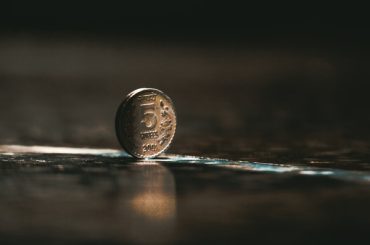This story is about how once India’s favorite washing powder Nirma, started by a chemist Karsanbhai Patel, snatched the market share from industry leaders like HUL with its innovative marketing, pricing, and supply chain strategy. Let’s read the strategy story of Nirma!!
Remember the jingle “doodh si safedi nirma se aayi, rangeen kapda bhi khil khil jaye, washing powder Nirma” and ‘Hema, Rekha, Jaya aur Sushma sabki pasand Nirma’. I know you are singing these iconic jingles in your head. I understand. Let me play it for you.
I also suppose you remember the little girl in a frilly white dress on the pack of Nirma. In the 90s, Nirma became the household name. How a jingle made Nirma “Sabki Pasand” is a story of another time.
But what I am trying to tell you is how Nirma challenged the status quo of a high-profile FMCG company at that time with its better understanding of customer needs, a near to perfect pricing strategy, and a brilliant marketing and supply chain strategy.
Hindustan Lever Limited (HUL now) is the FMCG company in context and the famous product is SURF. Surf had a complete monopoly in the market so much so that Surf became synonymous with the word “detergent”. Do Read what marketing strategies made Tide the No. 1 detergent brand in the world.
Surf was priced at Rs.13. My grandfather’s salary despite being in a Govt. job was Rs.150. Imagine if someone asks you today to spend 10% of your salary just on a detergent. You may go bonkers.
The story of Karsanbhai Patel, Nirma’s founder
The year was 1969 and there was a man on a bicycle, Karsanbhai Patel, who happened to be a chemist at the Gujarat Government’s Department of Mining and Geology. Karsanbhai Patel started off with a homemade product to clean clothes and that was not very harsh for hands. He priced it at just Rs3.5 per kg. So now the consumers had a good quality detergent at a very affordable price.
Nirma replaced Surf to be the number 1 washing powder brand in India in just a few years. But how?
Nirma was successful in creating New Points of Differentiation and a New Value Curve
- Karsanbhai Patel perfectly identified the market needs of the lower and middle class of India. He understood that these people didn’t care about the fancy packaging. They just cared about the price and ease of washing. Let me remind you detergent was still a premium product.
- Karsanbhai Patel achieved an excellent pricing strategy due to local sourcing with cash discounts, backward integration (Nirma was manufacturing all the input products), and minimal cream color polybag packaging. (Nirma had its own printing press too). He realized the actual “willingness to pay” of customers.
- During Nirma’s growth years, retailers were not regularly paying Nirma even when the entire Nirma stock was sold out. Karsanbhai Patel took a risky yet revolutionary step. His team cleared the entire stock from the market and launched its iconic marketing campaign (Washing powder Nirma) on the TV. People started demanding for Nirma, but it was nowhere to be found. Now retailers were ready to pay in cash upfront just to have the product.
Nirma’s strategy though simple gave a huge strategy lesson: give customers the best product at the price they are willing to pay.
For a company to increase Market share or snatch market share from a competitor, innovation is required in three areas:
Product Innovation: Brands and products make a mark when they find a better product than their competitors. It means having a sustainable competitive advantage that cannot be easily copied by customers. Product Innovation does not need to be fancy. It should be about getting the job done in the simplest manner. Nirma was doing exactly the same at a much cheaper cost.
The innovation is based on a strategy developed by Anthony W. Ulwick called Outcome-Driven Innovation, which says that people buy products and services to get jobs done. As people complete these jobs, they have certain measurable outcomes that they are attempting to achieve. It links a company’s value creation activities to customer-defined metrics.
Distribution Innovation: This innovation is about creating a niche for a product in terms of sales channels and avoid fighting for the shelf space. Ever noticed Timex watches in random stores? That is a part of a strategy. Timex gained its spectacular growth by selling maintaining exclusivity in drugstores or discount stores. Nirma perfected its sales strategy.
Promotional Innovation: As we have seen in Nirma’s story, Promotional innovation involves creating an innovative campaign or sales pitch that makes consumers crave a particular product rather than competitors’ products. For example: Does “A Diamond is forever” ring a bell? Diamonds were naturally worthless. One marketing strategy changed it. The campaign gave De Beers huge success in advertising its diamonds. They created an emotional value.
Nirma not only created an emotional bond with its customers. Nirma had a very progressive approach towards advertisement. This ad can be seen in a lot of ways. Most importantly it breaks the stereotype of the typical Indian Middle-class woman who was a housewife and an affectionate mother and who was largely concerned with domestic duties but is now a confident and bold woman, ready to take on any challenges.
All the above innovations helped Nirma to gain a huge Market Share in the washing powder market. By 1988, Nirma had close to 60% Market share, which reduced to 12% by 2015 but less than 6% in 2019 due to competition by indigenous brands like Ghadi. (Again story for another time that how Ghadi beat Nirma at its own game)
Fast forward to 2010, Nirma decided to de-list itself from the stock exchange.
Not because its sales were less or its products were not in demand. A company’s press release said the promoters, who hold 77.2% in the company would buy out 3.63 crore shares with the public at Rs235 per share, a 19% premium. The open offer would cost the company Rs850 crore and help its foray into “capital-intensive businesses” with the long-gestation period, the release said.
No matter what Nirma will always be a special brand to India. Not because of Nirma’s amusing advertisements or because of Nirma’s smart business strategies but because it’s a story of aspirational and innovative India. It’s a journey of a man that changed how an entire country of a billion washed its clothes. In short its a legacy.
P.S. – Do ask your parents about Nirma’s influence on their lives. You may get to know some very interesting facts.
-AMAZONPOLLY-ONLYWORDS-START-
Also, check out our most loved stories below

Why did Michelin, a tire company, decide to rate restaurants?
Is ‘Michelin Star’ by the same Michelin that sells tires, yes, it is! But Why? How a tire company evaluations became most coveted in the culinary industry?

Bajaj Auto: The Story of an Indian Born Global Brand
Bajaj Auto has evolved tremendously over time from its traditional scooter Chetak to having the trendiest bike Pulsar. It has managed to stay relevant.

Jio’s Offensive Marketing Warfare: From Challenger to Leader
In just 4 years Reliance Jio has become the Indian telecom market leader due to its marketing warfare strategies. What is this strategy and how Jio used it?

Johnnie Walker – The legend that keeps walking!
Johnnie Walker is a 200 years old brand but it is still going strong with its marketing strategies and bold attitude to challenge the conventional norms.

Flipsters: Creating the Butterfly effect in Indian Startup Ecosystem
How is it that ex-Flipkart employees or Flipsters as they call themselves have achieved such massive success in the Indian Startup Ecosystem?

Nike doesn’t sell shoes. It sells an idea!!
Nike has built one of the most powerful brands in the world through its benefit based marketing strategy. What is this strategy and how Nike has used it?

Domino’s is not a pizza delivery company. What is it then?
How one step towards digital transformation completely changed the brand perception of Domino’s from a pizza delivery company to a technology company?

Why Indians love Old Monk? What is the revival plan of the dying brand?
Indians especially armed forces and college students for generations have loved Old Monk. What makes this rum so special? It’s classy, dark yet affordable.

IKEA- The new master of Glocalization in India?
IKEA is a global giant. But for India, the brand modified its business strategies. The adaptation strategy by a global brand is called Glocalization
-AMAZONPOLLY-ONLYWORDS-END-

















